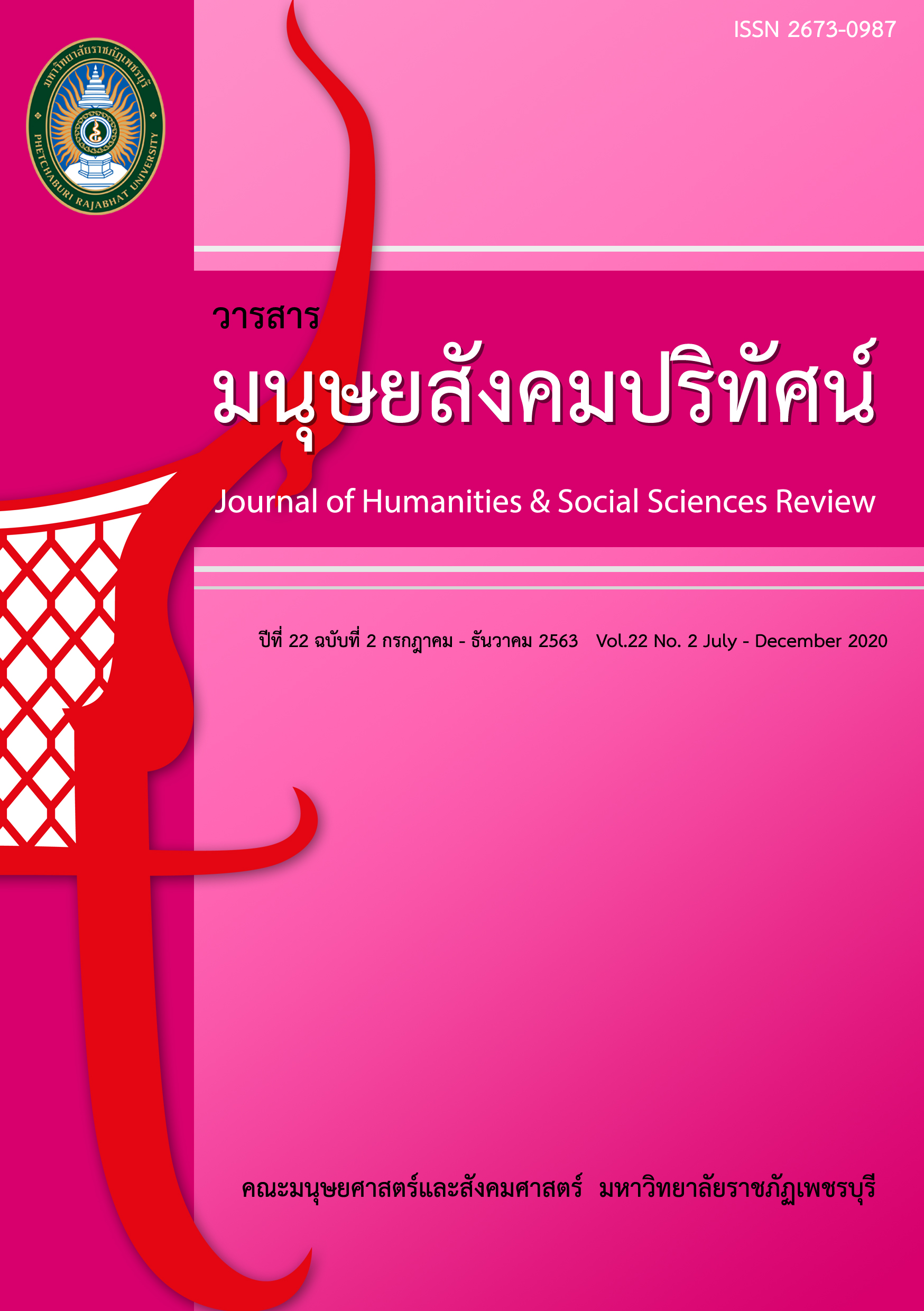Offering Dance of Thai Phuan Ethnic Group: A Case Study in Mabplakhao Sub-district, Thayang District, Phetchaburi Province
Main Article Content
Abstract
The purposes of this research were to: 1) determine the historical background of the Offering Dance of Thai Phuan ethnic group in Mabplakhao Sub-district, Thayang District, Phetchaburi, and 2) describe the components of the performance and choreography of the Offering Dance of Thai Phuan ethnic group in Mabplakao sub-district, Thayang district, and Phetchaburi province. The research used a qualitative study method. Data were collected from documents and field survey by observing and interviewing stakeholders, and data were analyzed, synthesized and concluded.
The research results were found that Thai Phuan people were the ethnic group who migrated from Xiengkhuang Territory in People’s Democratic Republic of Laos and later they had made a settlement in Phetchaburi. Today, their tradition and culture including the way of their livings had been changed through time in Thai society. The traditional way of life of Puan from Xiengkhuang Territory was lost, due to changes in the context of being a new civilization, Thai Phuan, Petchaburi.
The offering dance of Thai Phuan in Mabplakhao has been passed down for over 200 years. The dance was originally called “Rum Phuan.” It was usually performed in Kudsam Kransi Festival on 17th April to pay respect to the ancestors in heaven who were believed to be the protectors of Phuan families. The festival was held every year, and the dance was performed in front of the ancestor shrine of Moo 2, Mabplakao sub-district. The process of the festival began with monks blessing ceremony, sand forming ceremony, oxen and carts offering ceremony, and the offering dance.
The offering dance has been passed down from generation to generation. However, evidence had not been yet proved when and who invented it. In the past, the dance was performed by both men and women with improvised poem chanting and similar to Pleng Prob Kai, a rhythmic song of play. The choreography, or the dancing figure, was a random movement without pattern. Later, the offering dance was performed by only women who were descendants from Phuan group and they had to be virgin. The costume of the performer consisted of white long sleeves blouse, long skirt, golden accessories, and a hair bun tucked with a plumeria flower. The gamelan band, Thai orchestra, played music for the dance. This dance was influenced by the Chatree theatrical performing dance of Phetchaburi.
This research finding is useful for art conservation of Thai Phuan ethnic group in Phetchaburi. It is the valuable cultural heritage of ethnic groups in Phetchaburi to exist for next generations.
Article Details
1. Any views and comments in the article are the authors’ views. The editorial board has not to agree with those views and it is not considered as the editorial board’s responsibility. In case, there is any lawsuit about copyright infringement, it is considered as the authors’ sole responsibility.
2. The article copyright belonging to Faculty of Humanities and Social Sciences, Phetchaburi Rajabhat University are copyrighted legally. Republication must be received direct permission from the authors and Phetchaburi Rajabhat University in written form.
References
2. นลินรัตน์ คำปุ้ยธนันท์ธร. (2561, เมษายน 17). ประธานที่ปรึกษากลุ่มลั่นทมขาวสาวพวน. สัมภาษณ์.
3. ปราชญา สายสุข, (2562, มีนาคม 15). อาจารย์ประจำสาขาวิชาดนตรีศึกษา คณะมนุษยศาสตร์และสังคมศาสตร์ มหาวิทยาลัยราชภัฏเพชรบุรี. สัมภาษณ์.
4. โพธิ์ แซมลำเจียก. (2537). ตำนานไทยพวน. กรุงเทพฯ: ก.พลพิมพ์ พริ้นติ้ง.
5. รัชฎา พัดเย็นชื่น และสุมาลี ศรีชมพู. (2545). ประวัติศาสตร์เมืองพวน. กรุงเทพฯ: เฟื่องฟ้าพริ้นติ้ง.
6. สนอง ประกอบชาติ. (2521). ท้องถิ่นของเราจังหวัดเพชรบุรี. กรุงเทพฯ: แมส พับลิชชิ่ง.
7. สุจิตต์ วงษ์เทศ. (2555). ประวัติศาสตร์เมืองพวน. กรุงเทพฯ: กรมส่งเสริมวัฒนธรรม กระทรวงวัฒนธรรม.


